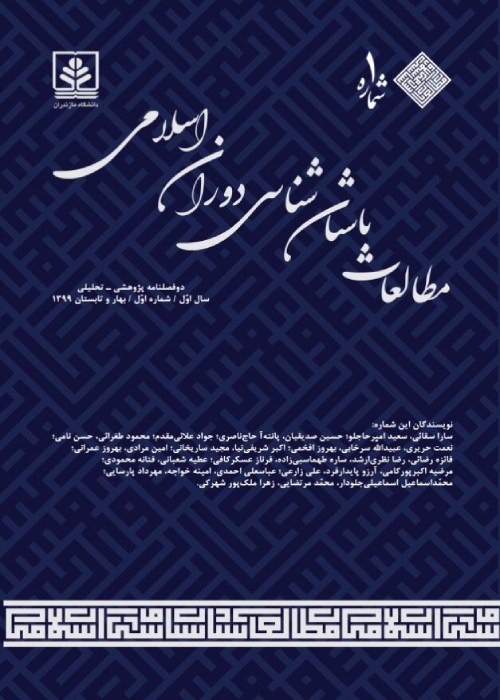Typology, Classification and Analysis Patterns of the Tombstones from Ilkhanid to Qajar Era in Iran
The issue of death and the world after it has been one of the basic thoughts of humankind from the beginning of the creation until today. This view has a set of various aspects and manifestations in all societies. One of the inseparable components of this thought in all societies from ancient times until today are tombs and tombstones which have been used as basic tools for its objective and spiritual manifestations. Although there are various views on the construction of tombs and signs related to them in different societies, this phenomenon has a special position in the Iranian-Islamic worldview and has been created in different forms and various decorative motifs. This research, besides studying the arrays used on the tombstones of 23 cemeteries in different regions of the country, classifies the tombstones in terms of appearance and placement and analyzes the concepts used in the motifs of tombstones and seeks to answer the following questions: 1. How many categories can tombstones from the Ilkhanate to Qajar era be classified in terms of appearance and position? 2. What do the concepts used in the motifs indicate? This research uses a descriptive-analytical method with documentary and field studies. The results show that tombstones can be classified into three types in terms of shape and placement: vertical, horizontal and a combination of both. They also have different types in terms of decorative arrays with various concepts including: human, plant, animal, abstract-geometric, objects and tools. According to the authors, the extent of the distribution and the existence of unity in the motifs, lines and themes of the inscriptions of the studied tombstones, indicate that these tombstones were not limited to a particular religion, period, or geography and indicate their Iranian-Islamic nature.
This research was conducted by descriptive-analytical method and the information was gathered by library and field studies. In this research, at first the essential sources for the research were collected. Then based on the obtained information, the classification, typology and analysis of the arrays used on the tombstones from the Islamic period was conducted.
Our results suggest that the tombstones were divided into three separate categories with different sub-branches in terms of location and statics. The intended types are :1) Horizontal tombstones that can be classified in the forms of a) box b) stepped–flat c) cradle d) statue. 2) Vertical tombstones in the form of raised stones in the form of a) uncut b) prismatic c) cylindrical. 3) Combined tombstones. It is important to mention that some of the identified fossils were not in a pathological condition and were mostly destroyed. Apart from their appearance and location, tombstones can be classified into the following types from the perspective of drawings and arrays used on the graves such as a) human b) animal c) plant d) abstract-geometric e) objects and tools. Each of the arrays which are used in different regions is different in terms of the way the motifs were created and their appearance and also there are noticeable differences in their details which seems to be more inspired by the worldview of the artists who designed the tombstone arrays. The formation of images on tombstones with inscriptions, ornaments, art, language and literature and aesthetic concerns is cognitive. According to the authors, the extent of the distribution and the existence of unity in the motifs, lines and themes of the inscriptions of the tombstones indicate that these tombstones were not limited to a particular religion, period, or geography, but rather it indicates their Iranian-Islamic nature.
The results obtained in this study showed that the process of tombstone formation in the Iranian plateau has generally begun in the middle of the Islamic centuries. After the patriarchal period, we see tombstones in various shapes and in various cemeteries in Iran, especially in the Northwest. These tombs have various motifs such as plant, human, geometric, inscription and etc. According to the etymology of some of these species, they date back to pre-Islamic Iranian cultures and some are related to Central Asia. In general, the tombstones studied in this study are influenced by the three cultures of Iran, Islam and Central Asia. The contribution of Northwestern Iran in the study of tombstones is more significant than other regions.
- حق عضویت دریافتی صرف حمایت از نشریات عضو و نگهداری، تکمیل و توسعه مگیران میشود.
- پرداخت حق اشتراک و دانلود مقالات اجازه بازنشر آن در سایر رسانههای چاپی و دیجیتال را به کاربر نمیدهد.


